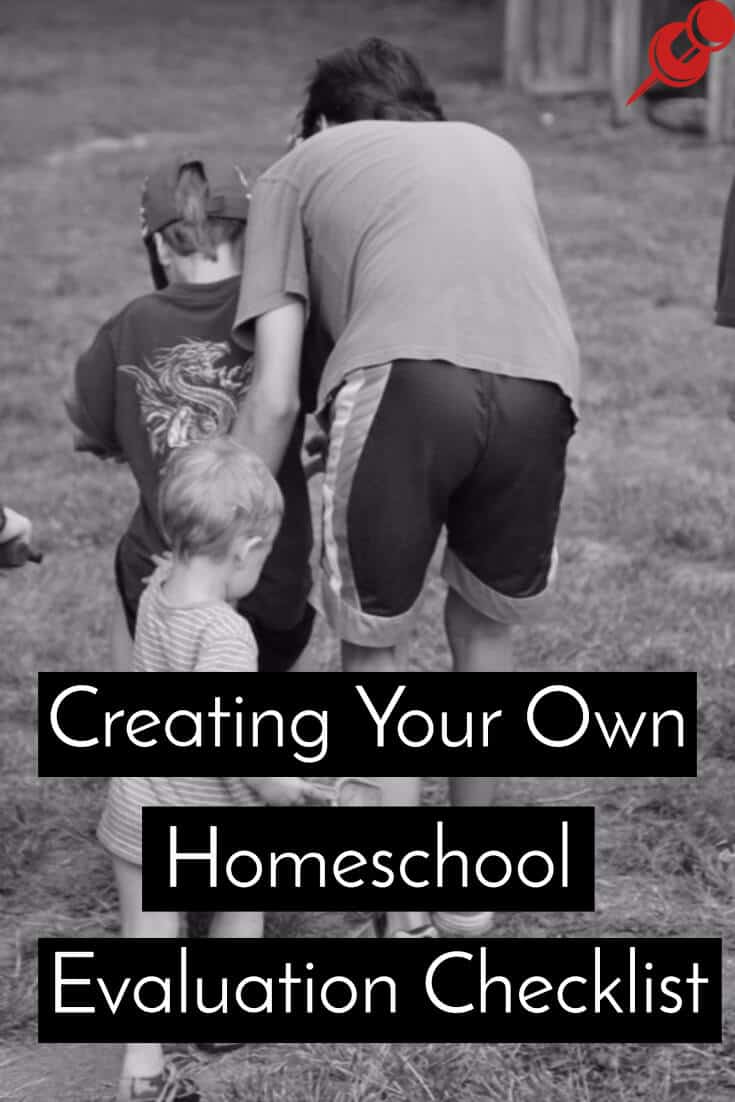Creating Your Own Homeschool Evaluation Checklist

As a homeschool parent, we get busy with a lot of things. We invest in great curriculum, create excellent lesson plans, and plan exciting field trips. With putting in all of this effort, we are confident that our child will learn.
But how do you really know? What if all of that planning is wasted when you get to the end of the year and find out that they didn’t learn as they should?
There is a way to avoid wasted time and ensure that your child is “getting it.”
At the beginning of the school year, I create a personal homeschool evaluation checklist and assessment for each of my kids. This is different from the government portfolio of samples and records or attendance. This is for my own personal use, and it’s simple to do.
What Is the Purpose of a Personal Homeschool Evaluation?
The purpose of my own evaluation checklist is to help me to know where each child is in every subject, where they need to be at the end of the year, and what areas there are that might need extra attention. At the end of the year, I want to know how much my kids have learned, experienced, and accomplished.
Evaluation Is Not Testing
I’m not talking about testing. Testing only tells a small part of the story; a little bit of the bigger picture. I want to know how my kids are doing emotionally, spiritually, and academically. I want to know how much further they got to my overall goal of the education of life.
As a parent, I am always evaluating my children and watching for things that they need help in but seeing things on paper helps me, and them, to see the progress.

How to Begin
To begin the evaluation, I list all of the areas that I would like to assess for each child. I grab a pen and paper, or open WordPad, and begin the list. For me, it goes something like this:
- Strengths
- Weaknesses
- Attitude
- Relationships
- Interests/ideas to pursue
- Independence level
- Areas to work on
Then I also list every subject that we are going to cover that year. You can add other areas or leave off some.
Where Are They Now?
Step one in this process is deciding where your child is in each area of homeschool. If your child is behind in an area or subject, then you will want to write small, specific goals for that area and evaluate it often.
This assessment is not about what score they make on a test, but the fact that they love history and currently struggle in math. Decide what your goal is for each area.
For history, it might be to continue introducing biographies that interest your child, and for math, it may be to find ways to get him excited about it like trying new online games or patiently sitting with him each day to encourage him.

Where Do You Want to Be at The End Of The Year?
Knowing where you want to be is just as important as knowing where you are. Set goals of where you want to be in each area by a certain date. I like to reevaluate every eight weeks. This is particularly useful in areas that your child needs work in.
Knowing that they need to get to lesson 8 in eight weeks is far different than knowing that they struggle in spelling. If you write down spelling as an area to work on, you will remember to watch for opportunities, in all of their work, to help them learn to spell.
Evaluation Is Really for The Parent
As a parent, this evaluation is about making reminders for myself. It helps me to be able to watch for opportunities all throughout my child’s day to help them in areas that they struggle and encourage them in areas that they are excelling in.
Because I am always with my child and I am constantly talking to them and helping them grow and learn, I may not realize how far they have come or how far off track they are getting. This process of evaluating helps me to refocus periodically on exactly what each child needs. It makes me a better teacher and a better parent.
At the end of the year, you can look back and know that not only did your child learn, but you can see just how much progress they made and your year won’t be wasted. Instead, it will be a huge success.








Leave a Reply